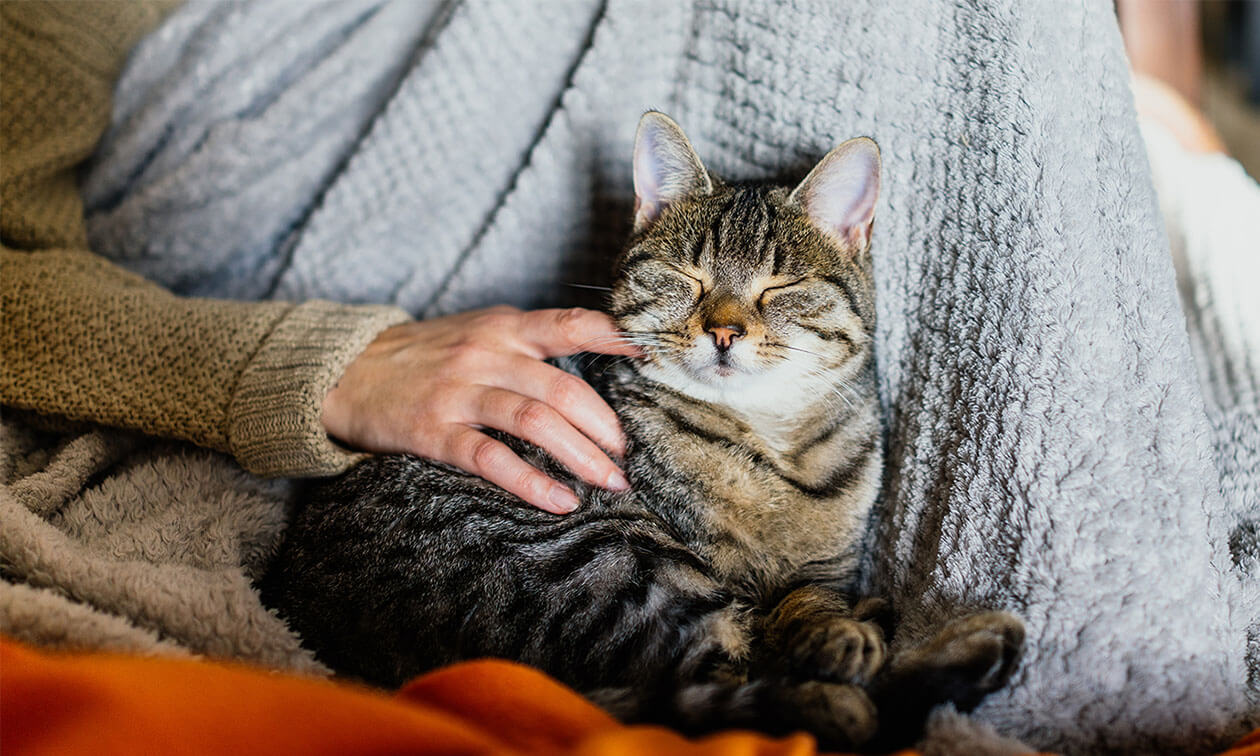Many viruses can affect your cat —some of which are highly contagious, like feline calicivirus. It’s important to know the basics like understanding the risks, symptoms, and best ways to protect your feline family member.
What Is Feline Calicivirus (FCV)?
Feline calicivirus belongs to a large family of viruses named caliciviridae. There are several strains of this virus, and new strains appear often as it mutates easily.
FCV most commonly occurs in multi-cat environments. Cats of any age are susceptible to the virus, but young kittens tend to have the most severe symptoms. Newborn kittens can even become infected if their mother is a carrier.
FCV often infects the lining of the mouth and tissues of the lungs. The infection usually starts in the lining of the mouth. From there, it spreads to other organs through the bloodstream. While most cats completely recover from an infection, some can develop chronic gingivitis (thick and inflamed gums). This makes eating and touching the mouth painful.
In rare cases, mutated strains called FCV-associated virulent systemic disease (FCV-VSD) can cause very serious disease and even death, damaging multiple organs1.
What Are the Signs of Feline Calicivirus?
Signs typically show two to 10 days after your cat is exposed3. On average, those signs last around 14 to 21 days. With more severe cases, signs may persist for up to six weeks. Severe infections are more likely in senior cats or young kittens.
The strain of FCV your cat has determines the signs they experience. Initial signs resemble that of a cold and include:
- Sneezing
- Nasal congestion
- Fever
- Drooling
- Eye and nasal discharge
- Conjunctivitis (membranes lining the eyelids become inflamed)
- Squinting
Signs of more severe cases can also include:
- Inflamed and ulcerated tongue
- Inflammation and ulceration of the lining of the mouth
- Lethargy
- Limping
- Lack of appetite
- Weight loss
- Young kittens can develop pneumonia.
Infection with some strains of the virus may cause joint inflammation. This looks like sudden, painful lameness, particularly in kittens and young cats. This sign usually only lasts a few days.
With your cat’s immune system fighting off the primary infection, secondary bacterial infections can pop up. Be on the lookout for other signs or changes in their normal behavior and contact your veterinarian if you notice anything unusual.
The signs are more severe for cats who develop the rarer FCV-VSD. These signs include:
- High fever
- Swelling of the head
- Swelling of the legs
- The nose, eyes, ears, and footpads will lose hair and develop crusting sores.
- Liver damage causing yellowing of the mouth and ears
- Bleeding under the skin and in the gastrointestinal tract resulting in bruising and blood in the stool.
Unfortunately, up to 60% of cats who develop FCV-VSD are not able to fight the infection, and it becomes fatal1.
How Do Cats Get Feline Calicivirus?
The virus is shed in saliva and discharge from the eyes and nose. Cats can become infected through:
- Direct contact with saliva and eye or nose discharge from an infected cat
- Inhaling droplets from an infected sneezing cat
- Sharing dishes and litter boxes with infected cats
- Coming into contact with contaminated items like bedding and grooming tools
People can also spread the virus to other cats if they touch an infected cat or contaminated objects.
The virus has also been found through lab tests in urine, feces, and blood, but it’s less common for cats to be infected by these.
Once infected, cats can shed the virus for two to three weeks. Some cats are long-term carriers and will shed the virus on and off for months even if they show no symptoms. This is why it’s so highly contagious.
Is Feline Calicivirus Contagious?
FCV is present everywhere, worldwide, and is highly contagious among cats2. It cannot be transmitted from cats to people or other pets.
If your cat is infected and you have other cats at home, isolation is suggested. You may find it easier to have either your infected or healthy cats stay with someone else, so you don’t have to worry as much about another infection. Work with your veterinarian to find the best plan for your cats if one or more is infected.
Thoroughly and regularly disinfect areas and items your infected cat has come into contact with. Routine cleaning is essential during this time to decrease the spreading of the virus. Soak and wash bowls and toys in hot water and soap.
Thoroughly wash your hands after handling an infected cat. Be sure to clean under the nails as well. Then, apply an alcohol-based hand sanitizer and change clothes before handling other cats.
After about a month, the virus typically dies off naturally on its own1.
If you’re bringing a new cat into your home with existing cats, consider isolating the new cat for one to two weeks so you can watch for symptoms of FCV.
How Is Feline Calicivirus Treated?
If you suspect your cat may have FCV, or even if you just notice some new, unexplained symptoms, it’s time for a trip to your veterinarian.
A definitive diagnosis isn’t usually necessary because these infections are so common, and most resolve with supportive treatment. However, if a definitive diagnosis is needed, your veterinarian will likely swab the mouth, eyes, or nose for specialized testing at a lab.
Treatment is primarily supportive care since no treatment can stop the virus. Most cats recover well at home with basic care, such as:
- Routinely cleaning the eyes and nose with a warm compress
Applying nasal saline drops as directed by your veterinarian
- Using vaporizers
- Giving medications to manage symptoms
- Feeding strong-smelling, soft food to encourage eating
Severe cases may require hospitalization and intensive care, such as intravenous fluids and nutrition support.
How Can You Prevent Feline Calicivirus?
One of the best ways to protect your cat is to have them vaccinated for feline calicivirus. The FCV vaccine is one of the recommended core vaccines for cats.
Since the virus mutates so readily, existing vaccines may not fully protect against new strains as they arise. Vaccines can significantly reduce the severity of the symptoms and the length of illness if your cat is infected.
Cats who live in high-risk, multi-cat environments like shelters, cat cafes, or foster homes with different cats coming and going may need to be vaccinated annually. Cats in low-risk environments like our homes can be vaccinated every three years. Your veterinarian will determine a vaccination schedule based on your specific cat’s risk.
ZPC-03134
- Feline Calicivirus. College of Veterinary Medicine. https://www.vet.cornell.edu/departments-centers-and-institutes/baker-institute/our-research/feline-calicivirus. Accessed October 1, 2023.
- Feline Calicivirus (FCV) Infection. International Cat Care. https://icatcare.org/articles/feline-calicivirus-fcv. Accessed July 17, 2025.
- Cote's Clinical Veterinary Advisor: Dogs and Cats, 4th Edition



